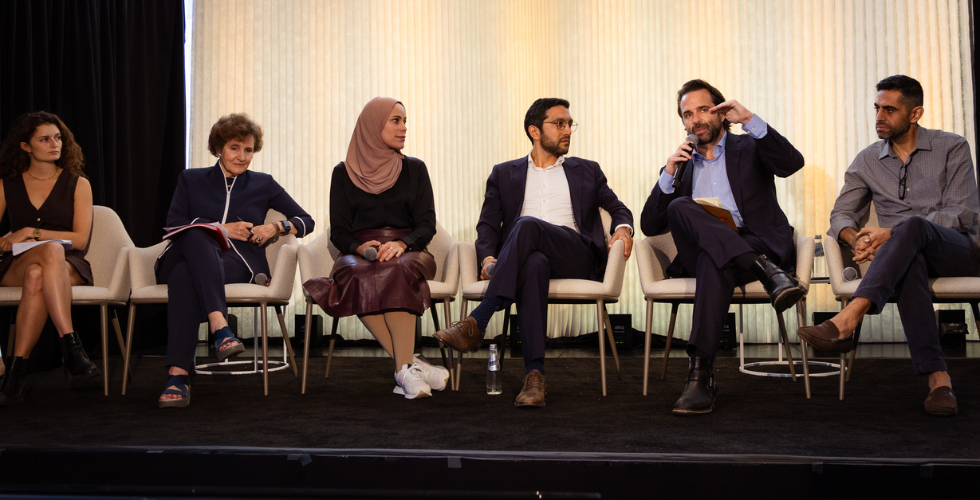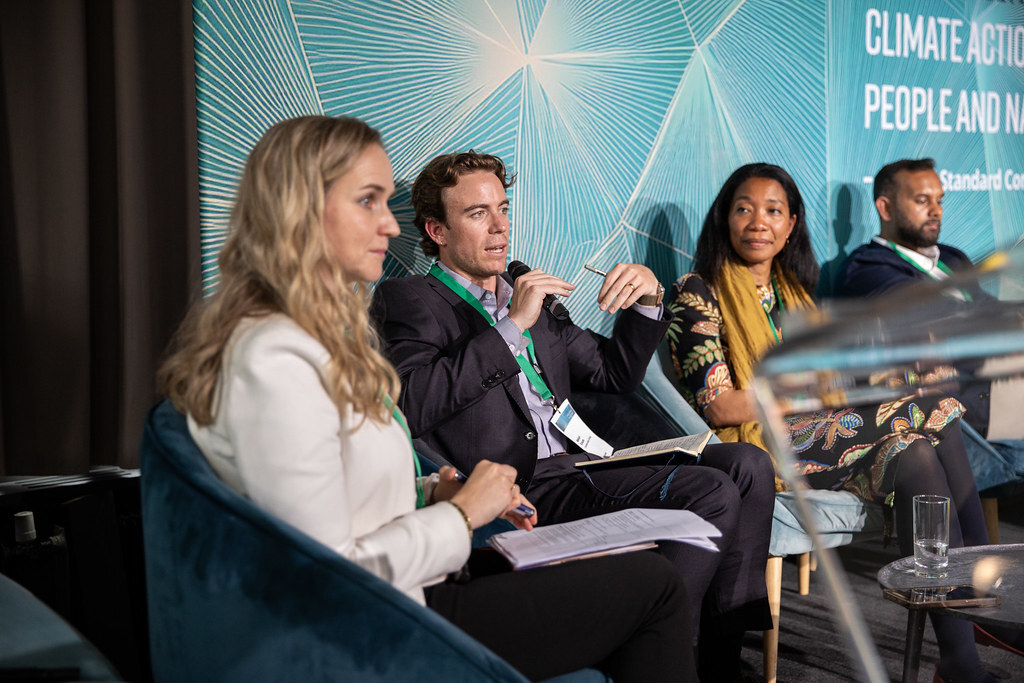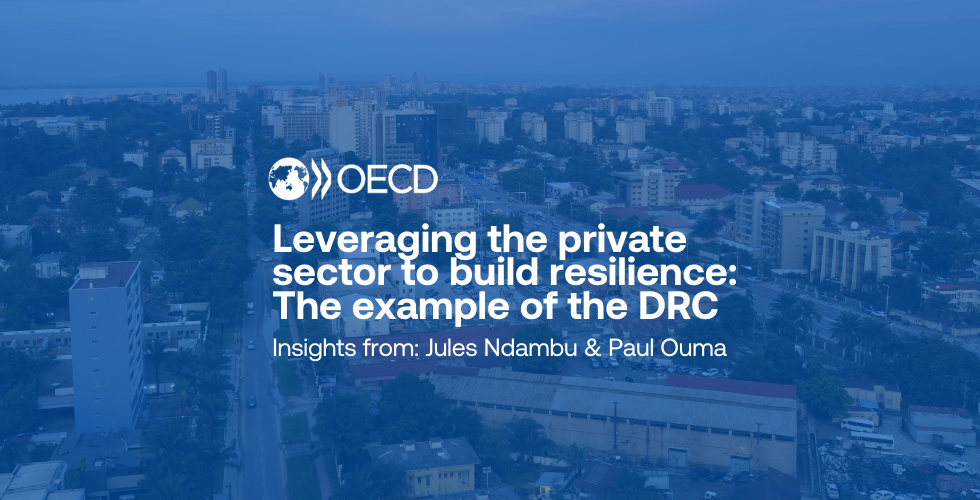
Redesigning development finance for a new era
The future of development finance will depend not on grand pledges, but on collaborative design and honest conversations that unlock scalable pioneer investments.
The future of development finance will depend not on grand pledges, but on collaborative design and honest conversations that unlock scalable pioneer investments.
As aid budgets tighten and global development debates intensify, practitioners are reassessing how development finance can keep pace with the world’s most urgent challenges. During the UN General Assembly, Devex brought together leading voices from the public, private, and philanthropic sectors to explore what is changing and how development finance can adapt.
The conversation, “Redesigning Development Finance for a New Era”, featured Alice Albright (former CEO, Millennium Challenge Corporation); Alaa Murabit (Managing Partner of Sustainable Growth, 500 Global); Arsalan Mahtafar (Head of Development Impact Agency, J.P. Morgan); Atul Satija (Founder & CEO, The/Nudge Institute); and Jake Cusack (Co-Founder and Managing Partner, CrossBoundary Group).
Together, they charted a pragmatic path forward; one grounded in transparency, collaboration, and disciplined design.
Shifting from promises to practice
Opening the discussion, Alice Albright, former CEO of the Millennium Challenge Corporation, emphasized that public resources should focus on building enabling conditions – infrastructure, policy reform, and human capital – that allow investment and job creation to follow.
“The re-imagination of international development is going to have to be much more around growth and around sustainability and around countries being in a position to attract much more in the way of different types of capital,” she said.
For Albright, the role of public capital is catalytic: to create systems that attract and sustain private flows, not to compete with them. She underscored philanthropy’s unique advantage to deploy long-term, flexible funding “divorced and separate from political and budgetary cycles,” which can help finance the innovations traditional aid cannot.
Every deal is a blended finance deal
Jake Cusack, Co-Founder and Managing Partner of CrossBoundary Group, pushed the conversation toward practical design principles.
“Every deal is a blended finance deal – all investments have consequences for public goods,” he said. “Blended finance isn’t a product. It’s a practice — one grounded in trust, clarity, and the willingness to go first.”
In Jake’s view, the next era of development finance will be defined not by new instruments, but by new levels of transparency and collaboration. Governments, donors, and investors must speak plainly about what success looks like and what risks each is willing to shoulder. He cautioned that first-loss guarantees are often a blunt tool, and that some sectors will always require sustained public or philanthropic engagement rather than one-off de-risking.
Certain markets, particularly those with weak infrastructure or high political risk, require more than temporary comfort for investors. They demand ongoing public partnership, regulatory engagement, and concessional financing that endures long enough for private capital to take root.
This, Cusack argued, is where impact-driven investors and governments can add the most value: by absorbing early-stage uncertainty and allowing commercial financiers to follow with scale.
“Supporting pioneer deals has a public good rationale – small early transactions can open entire sectors.”
Jake referenced CrossBoundary Energy’s trajectory, from a $10 million pilot to a nearly $1 billion business, as evidence that well-structured early investment vehicles can unlock private capital at scale. Early concessional capital was essential but so was disciplined commercial design from the outset.
Sustainability through co-architecture
For Alaa Murabit, Managing Partner of Sustainable Growth at 500 Global, sustainable finance must begin with co-creation. “Unless you have [government and partners] around the table from day one,” she said, “you won’t have them bought in on day 200.”
Murabit called for “co-architecture” among governments, communities, and investors, and urged moving beyond the false binary of profit versus impact.
“Catalytic capital without an ecosystem to operate in…really is just catalytic capital — and it doesn’t move beyond that.”
She also highlighted underutilized pools such as Islamic and faith-aligned finance, the value of decoupling catalytic capital from philanthropy, and ensuring financing is building sustainable agency.

From alignment to clarity
Arsalan Mahtafar, Head of Development Impact Agency at J.P. Morgan argued, that investors don’t need every actor aligned; they need them to be clear.
“You’ll never get alignment across all of the different actors,” he said, “So the next best thing you could do is to at least have clarity — each actor to have clarity on what they want and what they could offer.”
That clarity, he explained, reduces friction and accelerates investment in complex markets. Unclear mandates among concessional, philanthropic, and public investors slow deals and raise costs. He pointed to institutions like MIGA, which define eligibility and pricing transparently, as models that allow private capital to move with confidence.
From pilots to portfolios
“We discuss gaps of trillions but we’re [framing] solutions of hundreds of billions, and there is just no match…,” said Atul Satija, Founder and CEO of The/Nudge Institute. We need to have a bottom-up view of what’s investable and realistic size expectations.
Satija cited India’s Corporate Social Responsibility (CSR) law, which mandates 2% of corporate profits for social causes, as a case of untapped potential: billions deployed as charity rather than leveraged as catalytic capital.
He urged philanthropy and investors alike to build continuity, including pipelines that connect small, experimental pilots to scalable vehicles.
“We have a graveyard of successful pilots, instruments, [and] facilities…,” he said, “but we need to figure out how to build an entire continuity path of early-stage pilots,” that connect to scalable, long-term investment. “We need to get impact in terms of years, not decades.”

5 key takeaways for a new era of development finance
Across the panel, several common threads emerged around the pragmatic, actionable steps that define the next chapter of development finance:
- Be transparent about incentives and trade-offs
Clarity beats consensus. Investors and governments must articulate return expectations and risk appetites early.
- Start small but structure for scale
Early, well-designed pilots generate data, confidence, and replication potential.
- Co-create with governments and local actors
True sustainability comes from shared ownership, not imported models.
- Unlock philanthropy into catalytic capital
Where the nature of the outcomes align, move from grants to coordinated, risk-tolerant blended finance vehicles that crowd in private investment.
- Invest in enabling environments needed to spur follow-on private investment
Infrastructure, policy reform, and human capital are the foundations of investability.
The future of development finance will depend not on grand pledges, but on collaborative design and honest conversations that unlock scalable pioneer investments.




